Embarking on our narrative journey, we set our sights on the renowned Abu Simbel temple, a monumental creation by the illustrious Ramses II. This architectural marvel was not only a tribute to the deities but also a testament to his profound affection for Nefertari, his most cherished amongst his thirty-two consorts.
Our voyage to Abu Simbel commenced at the first light of dawn, a time when the world still slumbers in tranquility. Our journey began at four in the morning, necessitating an earlier awakening. This early departure is customary, as evidenced by the convoy of minibuses from various tour companies that accompanied us. Opting for an intimate experience, we traveled in a private vehicle, guided by a knowledgeable local.
The journey spanned approximately 260 kilometers from Aswan to Abu Simbel, a drive of nearly three hours. The route itself was a spectacle, a straight path cutting through the expansive desert, with its sandy and stony terrain stretching endlessly. This voyage required preparation, particularly ensuring a full fuel tank, as service stations are a rarity along this isolated stretch.
As we journeyed, the desert sunrise, a spectacle of radiant hues, offered a moment of profound inspiration. In that instant, the significance of Ra, the Sun God, in Egyptian mythology became vividly clear to me.
After nearly two hours driving, we paused for a brief respite, a solitary oasis amidst the desert where travelers could partake in tea or coffee and avail themselves of pristine facilities. This appeared to be a singular haven, as every touring caravan seemed to converge here.
Upon reaching Abu Simbel after a three-hour sojourn, a mere five-minute stroll from our parking spot brought us face to face with the site’s grandeur. Abu Simbel is a site of dual temples, one honoring Ramses II and the other dedicated to Nefertari.
Sunrise of the Pharaohs: The Majestic Legacy of Abu Simbel
Located near the Sudanese border, the Temple of Abu Simbel stands as a monumental testament to ancient Egyptian architecture and the reign of Pharaoh Ramesses II. Carved out of a mountainside during the 19th Dynasty, this historical site comprises two massive rock-cut temples, originally built around 1264 BC and completed over a span of 20 years. The temples were a part of Ramesses II’s extensive building program throughout Egypt and Nubia, a region vital for its resources, especially gold.
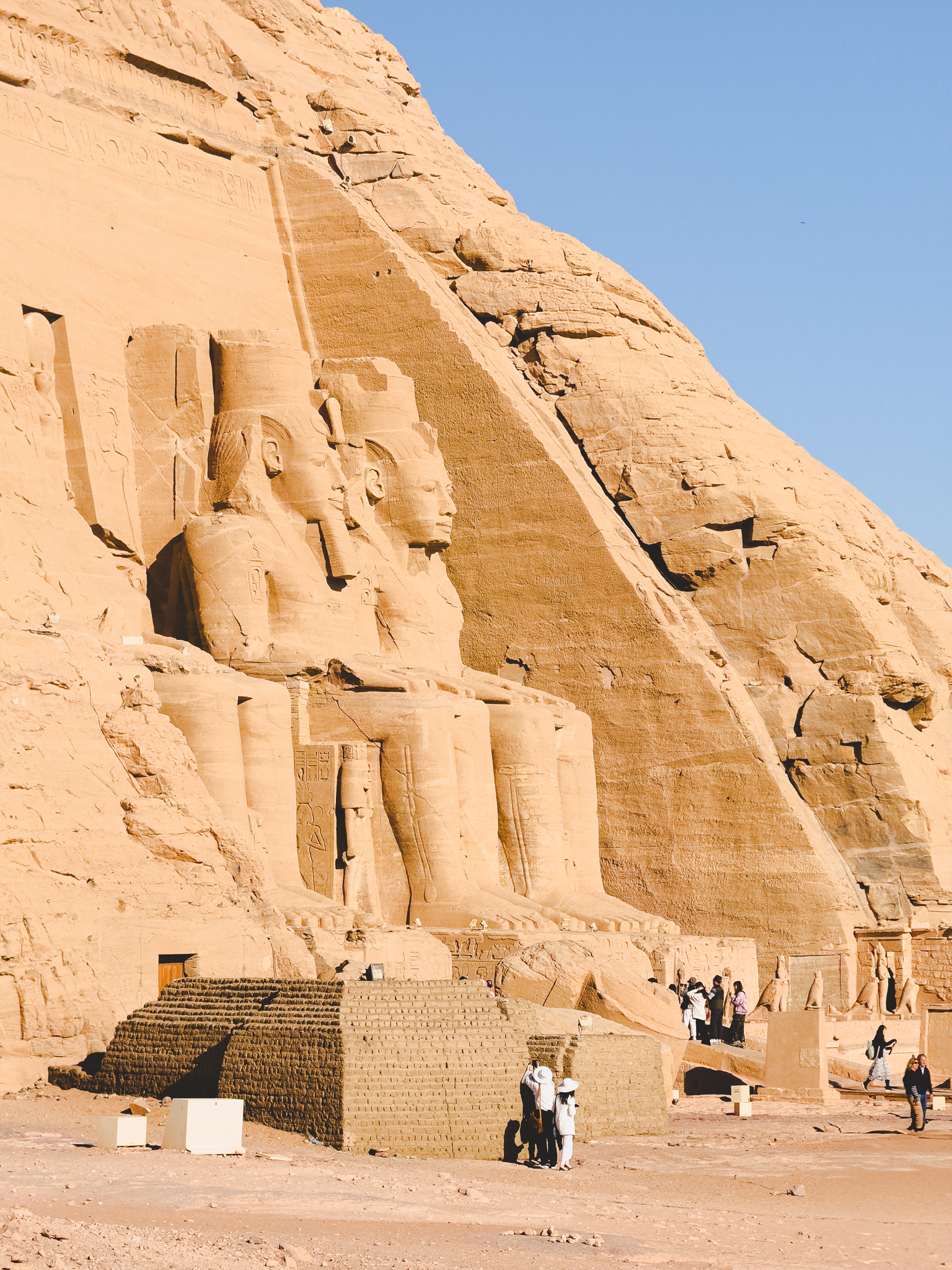
The larger of the two temples is dedicated to the three state deities of the time: Ra-Horakhty, Ptah, and Amun, and features four colossal statues of Ramesses II, each standing 20 meters tall.
These statues are iconic symbols of Pharaonic Egypt, representing the might and divinity of Ramesses II. Intriguingly, the smaller temple is dedicated to the goddess Hathor, personified by Nefertari, Ramesses’s most beloved of his many wives. Inside the Great Temple, sculptures and bas-reliefs commemorate Ramesses II’s leadership, particularly highlighting his role in the Battle of Kadesh.
Our time at Abu Simbel, spanning about three hours, was divided between absorbing our guide’s enlightening commentary and capturing the essence of the place through photographs and videos, destined to grace our Instagram feed.
Despite its ancient grandeur, the temple complex was not immune to the ravages of time and nature. Over centuries, the temples fell into disuse and were eventually engulfed by sand dunes. The Great Temple was mostly buried by the 6th century BC, and it remained forgotten until its rediscovery by Swiss researcher Johann Ludwig Burckhardt in 1813. Italian explorer Giovanni Belzoni later entered the complex in 1817, providing the first detailed descriptions and drawings.
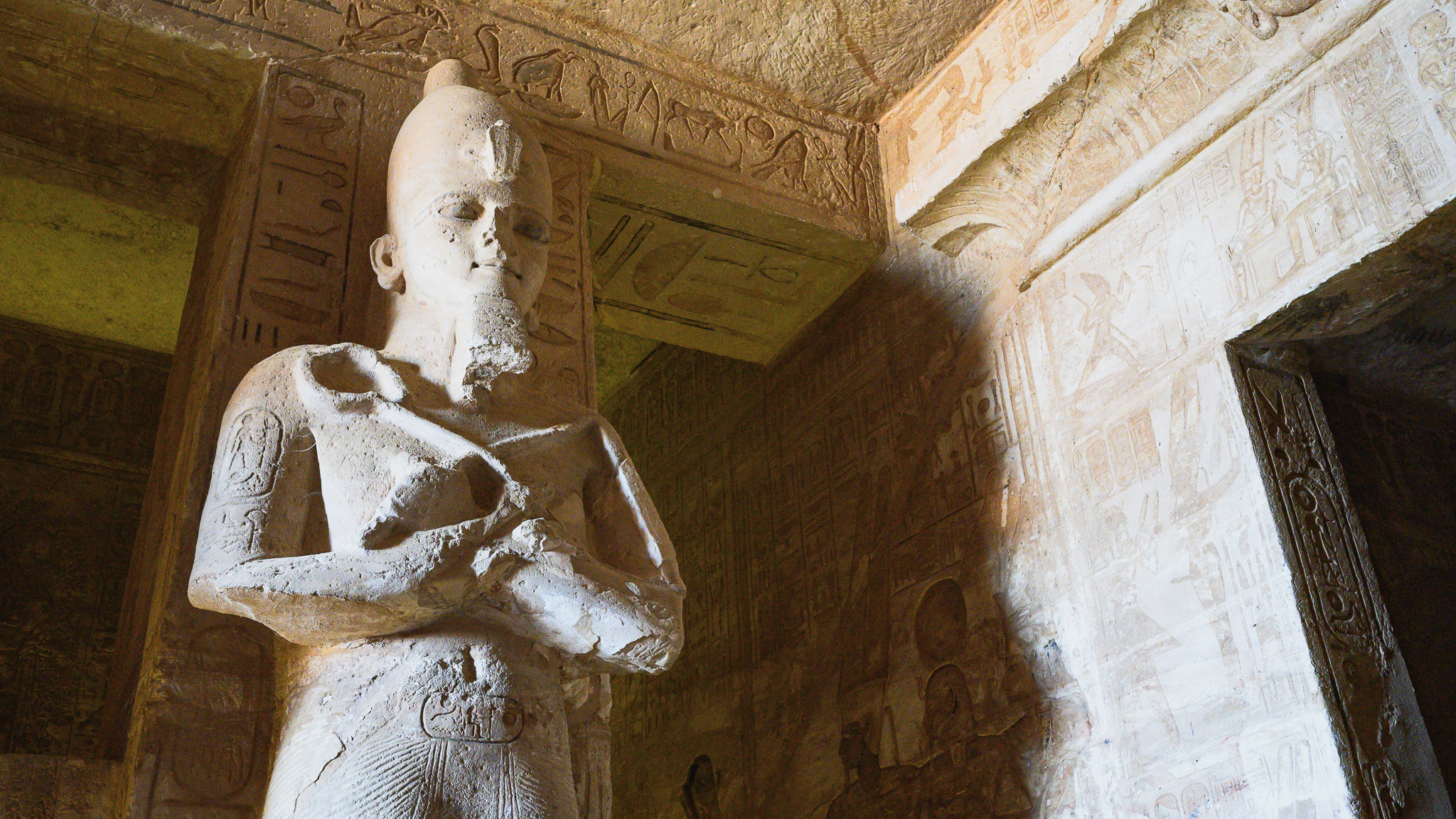
A fascinating aspect of the Abu Simbel temples is their alignment with the sun. The axis of the temple was positioned so that on October 22 and February 22, dates which are speculated to be related to Ramesses II’s birthday and coronation day, the rays of the sun penetrate the sanctuary, illuminating the sculptures on the back wall, except for the statue of Ptah. This phenomenon attracts crowds every year, eager to witness the unique interplay of architecture and astronomy.
In the mid-20th century, the temples faced a new threat: submersion due to the rising waters of the Nile resulting from the construction of the Aswan High Dam. This led to an extraordinary international effort, spearheaded by UNESCO, to save these ancient wonders.
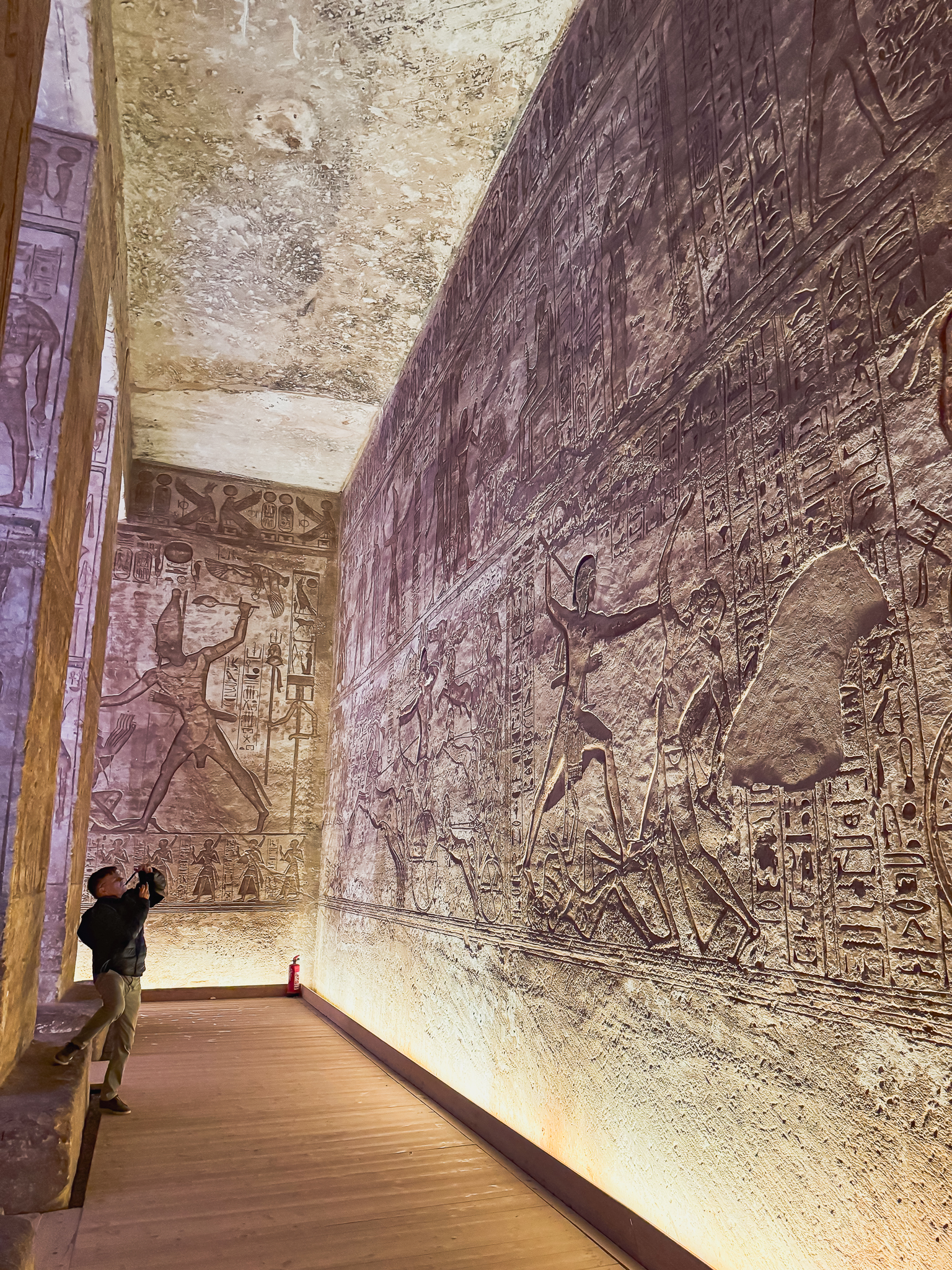
Between 1964 and 1968, the entire temple complex was meticulously cut into large blocks, dismantled, and reassembled on an artificial hill, 65 meters higher and 200 meters back from the river.
This massive engineering feat was not just a triumph of archaeology but also a symbol of international cooperation in the preservation of cultural heritage.
Today, Abu Simbel stands as a beacon of ancient Egyptian culture and ingenuity. The temples’ relocation and reconstruction have allowed them to continue inspiring awe in visitors from around the world.
The site serves as a profound reminder of the historical connection between Egypt and Nubia and the enduring legacy of Pharaoh Ramesses II.
Visitors to the temple cannot not only marvel at the architectural and artistic achievements of ancient Egypt but also reflect on the importance of preserving such invaluable cultural treasures for future generations.
Our return to Aswan was governed by a schedule, aimed to reconnect with our hotel ship by 14:00. This vessel, our temporary abode, was set to embark towards Luxor, gracefully navigating the Nile and pausing to explore temples and other archaeological marvels en route.

At 16:30, we convened on the deck, our spirits uplifted by the serene beauty of the setting sun. This moment was an embodiment of peace and enchantment, the light casting an ethereal glow over everything.
The day’s final chapter unfolded around 17:00 with our visit to the Kom Ombo temple, a site steeped in the intriguing lore of the gods Sobek and Horus. The temple, under the veil of night, took on an aura of awe and mystery.
Symmetry and Sanctity: Exploring the Unique Double Temple of Kom Ombo
The Temple of Kom Ombo, nestled in the town of Kom Ombo, is a stunning testament to the architectural ingenuity of the ancient Egyptians. This temple is unique for its ‘double’ design, an architectural feature unprecedented in the pantheon of Egyptian temples.
Constructed during the Ptolemaic dynasty, specifically between 180 BC and 47 BC, the temple showcases the artistic and religious advancements of the period.
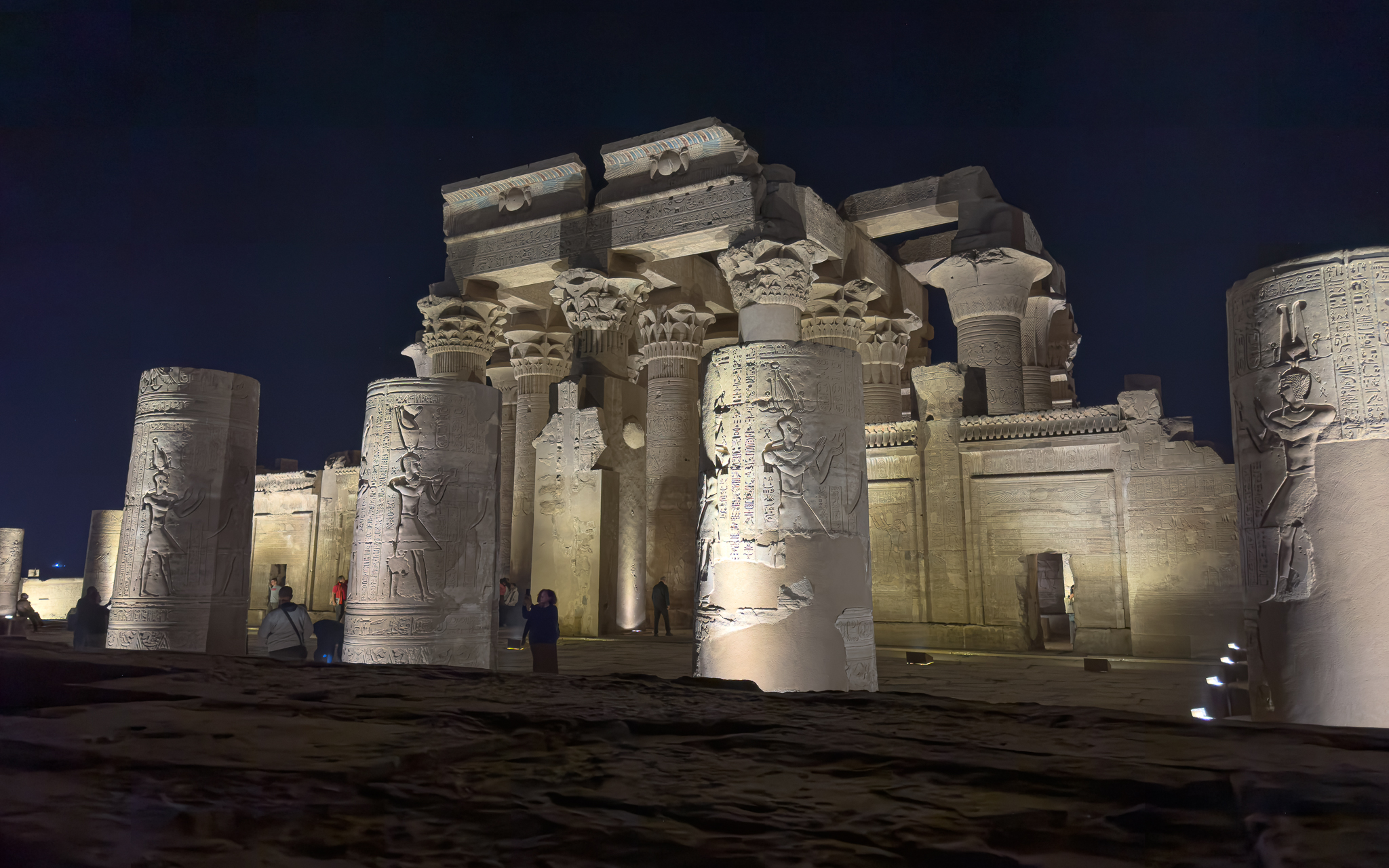
This architectural masterpiece is characterized by its symmetrical structure, with every aspect of the temple duplicated along its main axis.
This includes two pylons, two entrances, two hypostyle halls, two courtyards, and two sanctuaries. This symmetry was not just for aesthetic purposes but also had a deep religious significance.
The temple was dedicated to two primary Egyptian gods: Sobek, the crocodile god of fertility and creator of the world, and Horus the Elder, the falcon god.
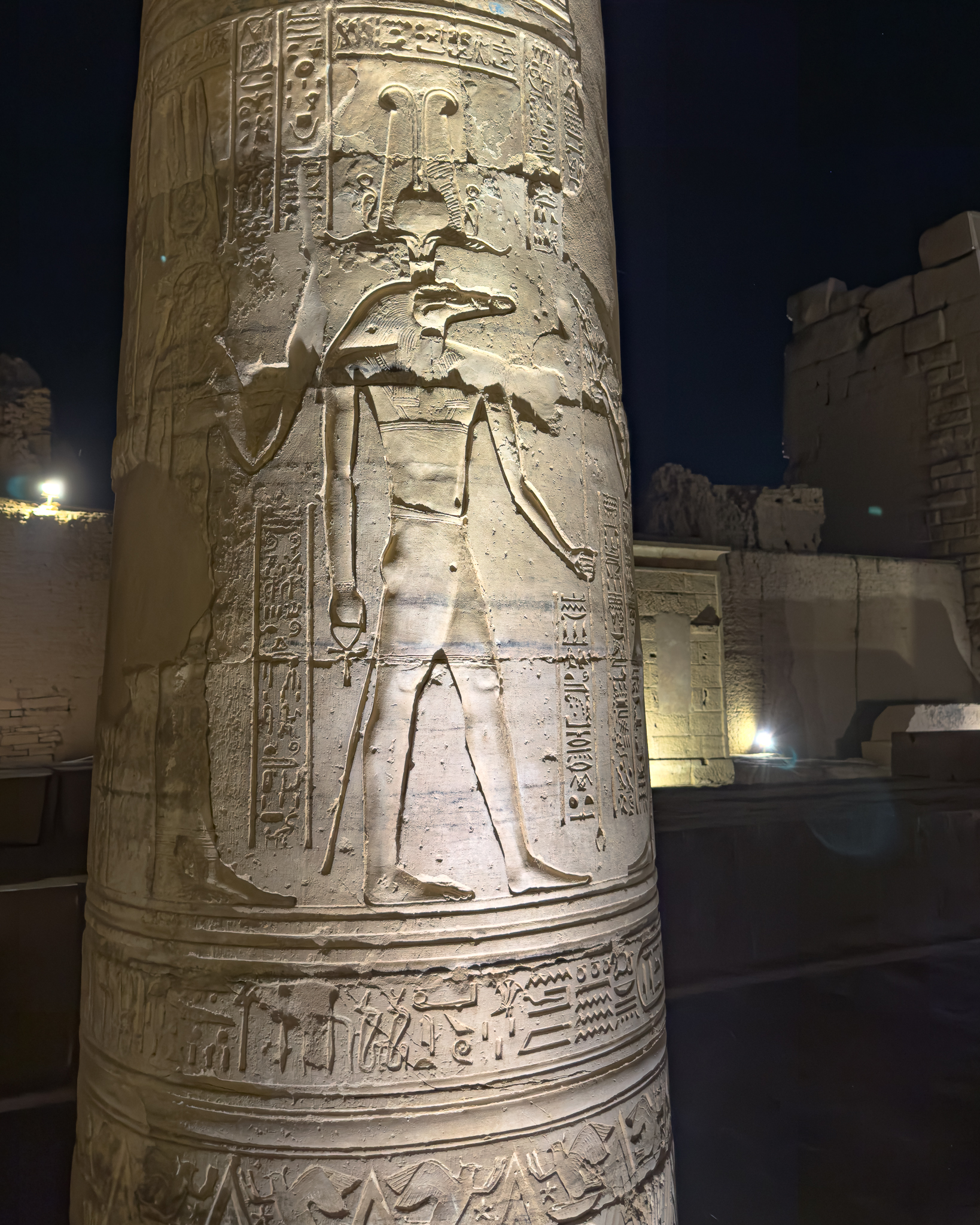
The southern half of the temple was devoted to Sobek, along with Hathor and Khonsu, while the northern part honored Haroeris (another name for Horus the Elder) and his associated deities, Tasenetnofret and Panebtawy.
In the rich tapestry of Egyptian mythology, the relationship between Sobek, the powerful crocodile god, and Horus, the majestic falcon-headed deity, is a captivating tale of complexity and intrigue.
Beyond mere conflict, their story weaves together themes of transformation, collaboration, and the deep interconnectedness of the divine.
At the heart of their narrative is a transformative journey where Horus, embodying the form of a crocodile, embarks on a mission to retrieve the scattered pieces of Osiris, his father.
This act not only symbolizes the unification of fragmented realms but also highlights Sobek’s significant role as an aspect of Horus, bridging their divine essences in a profound display of metamorphosis and unity.
The temple’s walls and columns are adorned with intricate texts and reliefs, providing insight into the religious practices and theological concepts of the time. These reliefs portray a mixture of universal and local themes, weaving a rich tapestry of the theological narrative that was central to the worshippers of Sobek and Horus. Despite its prominence during the Ptolemaic period, the site was also significant during the New Kingdom, although little remains from that era. Ptolemy VI Philometer initiated the construction of the current structure, which was subsequently added to by other Ptolemies, notably Ptolemy XIII.
However, the temple’s journey through history has not been without turmoil. It has withstood damage from the Nile floods, earthquakes, and even human interventions, as it was used as a source of building materials for other constructions. In a turn of historical irony, some of the temple’s reliefs were defaced by Copts who repurposed it as a church. Despite these challenges, the temple was extensively restored in 1893 by Jacques de Morgan, preserving its grandeur for future generations.
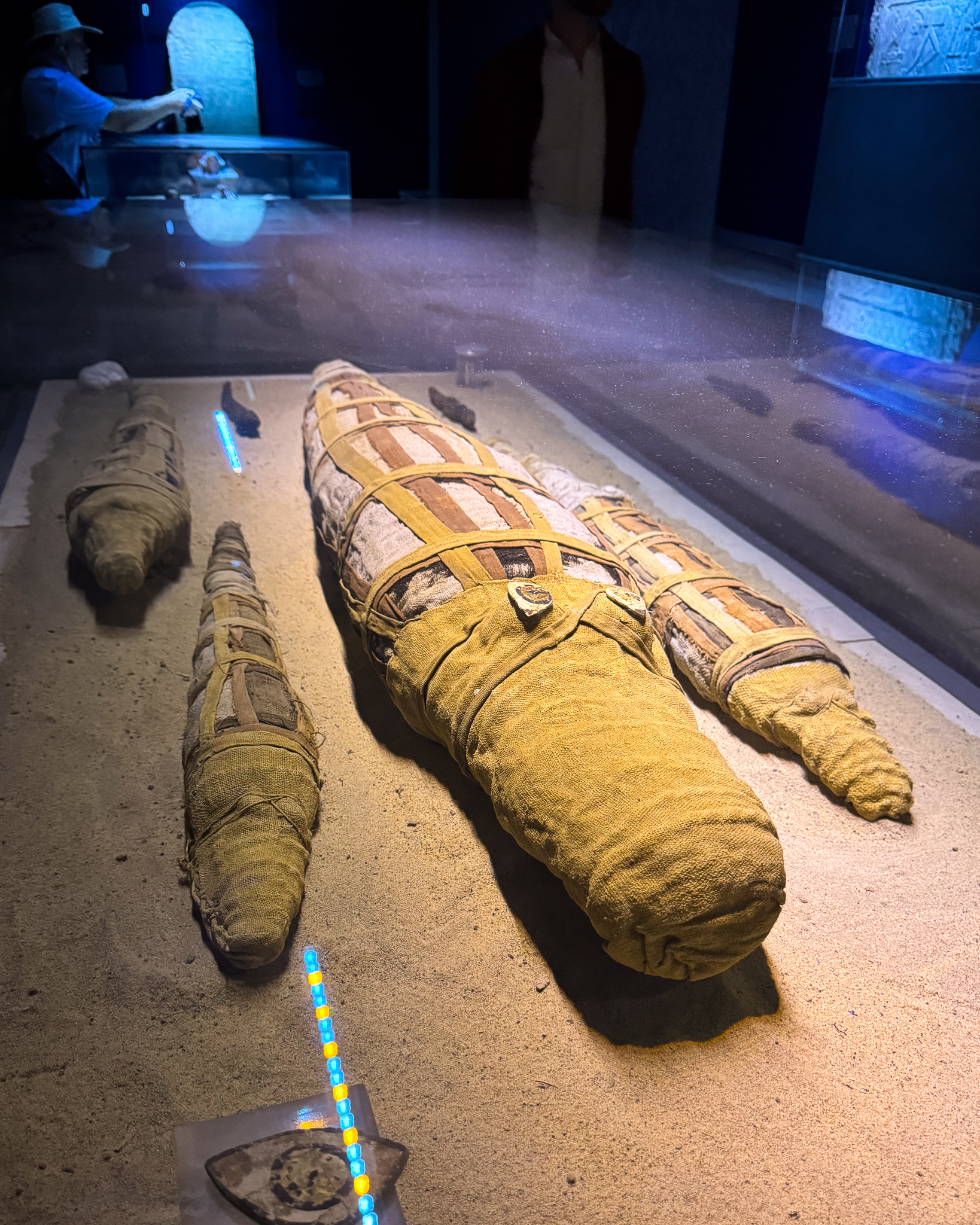
The site is not just significant for its architectural and historical value; it also holds archaeological importance. Approximately 300 crocodile mummies were found in the vicinity, indicative of the animal’s sacred status due to its association with Sobek.
A few of these mummies are displayed in The Crocodile Museum near the temple. Adding to the site’s archaeological significance, recent discoveries include the head of a bust of Roman Emperor Marcus Aurelius and a sandstone sphinx statue, both unearthed in 2018.
The Temple of Kom Ombo stands as a symbol of the religious, cultural, and architectural sophistication of ancient Egypt. Its dual structure not only reflects the religious duality of its time but also showcases the advanced architectural skills of the ancient Egyptians. Today, it offers a window into the past, allowing us to glimpse the religious practices, artistic expressions, and societal norms of an ancient civilization that continues to fascinate the modern world.
After spending an hour and a half immersed in the mystique of Kom Ombo, we returned to our vessel for the night, hearts full of wondrous experiences. As I retire, I am certain that visions of hieroglyphs will dance through my dreams, a perfect end to a day replete with discovery and awe.



